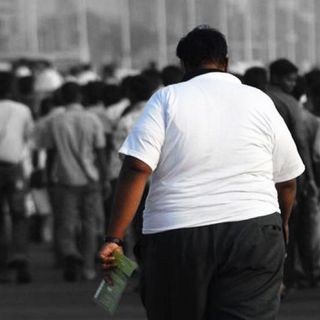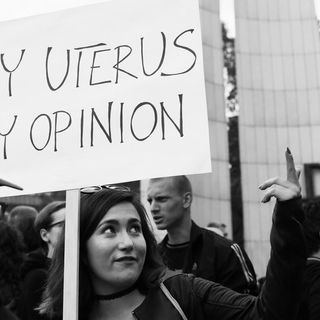
What the So‑Called Fourth Trimester Means for Postpartum Women
The physical and hormonal changes of pregnancy don’t end with childbirth.

You’ve probably heard the term ‘fourth trimester’ thrown around. It’s a bit of a misnomer since ‘tri’ means three, which by definition is one less than four, but nevertheless, it’s taken root to describe the three months after giving birth.
What is the fourth trimester?
The fourth trimester refers to the first three months postpartum when women’s bodies continue to change drastically, and newborns develop at a rapid rate. The term is an acknowledgment that the effects of pregnancy and delivery on a woman’s body don’t end with childbirth and that the first three months of life contain critical developmental milestones. By viewing this period as an extension of pregnancy — the fourth trimester — practitioners can ensure women and children get the appropriate care.
Here, we’ll explore the fourth trimester specifically as it relates to a woman’s body.
What changes are normal in the fourth trimester?
A woman’s body undergoes a lot of changes in the fourth trimester, but not all are obvious. Let’s start with hormones: After birth, hormone levels change drastically. While levels of oxytocin and prolactin — the ‘baby-bonding’ and ‘breast milk production’ hormones respectively — soar, estrogen and progesterone levels plummet. Estrogen drops especially low — to menopausal levels, in fact. Normal estrogen levels eventually resume, but until they do, a woman may experience vaginal dryness and sweating akin to hot flashes for several weeks after birth. Low levels of progesterone, a hormone that helps regulate emotions and manage anxiety, can prompt feeling overwhelmed, mental fuzziness, and ‘Baby Blues,’ that is, feelings of confusion, irritability, worry and/or sadness. These emotions are usually temporary, occurring for a few minutes to an hour each day during the first two weeks after giving birth. (If they linger beyond two weeks, or are more intense or worsen, consult your doctor and/or a therapist.)
The fourth trimester’s swirling hormones can also prompt hair loss, acne, dry skin, and skin pigmentation. The fluctuation can also cause some women to experience morning sickness all over again; vomiting is possible.
Displaced internal organs also slowly shift back to their original sizes and locations. For roughly six weeks after giving birth, a woman will likely have cramps as the uterus contracts to its pre-pregnancy size. Post-birth bleeding, called lochia, also continues up to six weeks after giving birth.
Muscles are also recovering, especially the abdominal muscles and the pelvic floor, which may feel weak for some time, complicating bowel movements.
Other obvious changes include a change in breast size as the woman’s body begins producing breast milk; this is often accompanied by soreness, which is normal. This increase in breast size could be permanent or not; for some, breasts return to pre-pregnancy size after ceasing breastfeeding. For others, breasts may actually get smaller at that point.
During the fourth trimester, women’s full immunity returns slowly from its suppressed state during pregnancy, continuing their increased vulnerability to infection.
Also during this period ovulation resumes; for women who are not breastfeeding, menstruation typically resumes six to eight weeks after childbirth, and for women who are breastfeeding, menstruation typically resumes as soon as the baby starts requiring less milk (typically around month six). But — ovulation begins a month before the first period resumes, so it’s wise to use protection at whatever point you choose to resume sexual activity. It’s totally possible to begin ovulating and not know it.
Finally, scans show women’s brains gain gray matter in the fourth trimester. Regions geared toward parent-baby bonding, attunement and protection gain more neurons and connectivity, but scientists understand little about the effects or implications. And they don’t know whether these changes are short-lived or permanent.
What complications should you watch out for in the fourth trimester?
Some pain, soreness, bleeding, and swelling are normal, postpartum. But women continue to be at risk for some pregnancy-related complications even in the fourth trimester after giving birth. For instance, preeclampsia can still develop in the weeks after childbirth; if you experience blurred vision, headaches or dizziness, call a doctor immediately. Dizziness, along with shortness of breath or faintness, could also be a sign of a dangerous blood clot in your extremities. Studies suggest women are anywhere from 10 to 22 times more likely than normal to develop one of these clots, known as pulmonary embolism, during the fourth trimester.
Women are also still at risk for hemorrhaging. While post-birth bleeding is normal, if you’re soaking through a menstrual pad within one to two hours, there may be a problem. Blood clots are not unusual, and don’t necessarily signal a problem; it’s the volume, with or without clots, that should be watched.
Because immunity returns slowly after being suppressed throughout pregnancy, women are also at risk for infection during the fourth trimester. This includes manageable infections like colds, cavities and gum disease, but can also include serious internal infections like endometritis (inflammation of the uterine lining) and others. If you have the chills, or a fever of 101 degrees F or higher, call a doctor. Foul-smelling vaginal discharge, or sudden drainage from C-section or episiotomy incisions, are also signs of an infection.
Mastitis, that is, an infection of the mammary glands, is another common complication during this time; if you have flu-like symptoms accompanied by consistently sore or painful breasts, consult a doctor.
And while burning during urination is common right after childbirth, if it continues for more than one to two days or worsens, it may indicate a UTI.
Finally, diastasis recti (a tear in the abdominal wall that allows internal organs to poke through) and weakened or damaged pelvic floors become apparent in the fourth trimester. Certain abdominal exercises can aid in diastasis recti recovery (though other kinds of ab exercises can worsen it). Pelvic floor strengthening exercises can help, as can consulting a specialized physiotherapist.
And last but certainly not least, given the fourth trimester’s wild ride of hormones, hormonal complications like postpartum depression and postpartum thyroiditis can develop during this period. If your emotions — whatever they are — feel out of control, it’s a good idea to consult a doctor and/or therapist.
Liesl Goecker is The Swaddle's managing editor.
Related


Obesity in India Is on the Rise While Hunger Increases Worldwide
